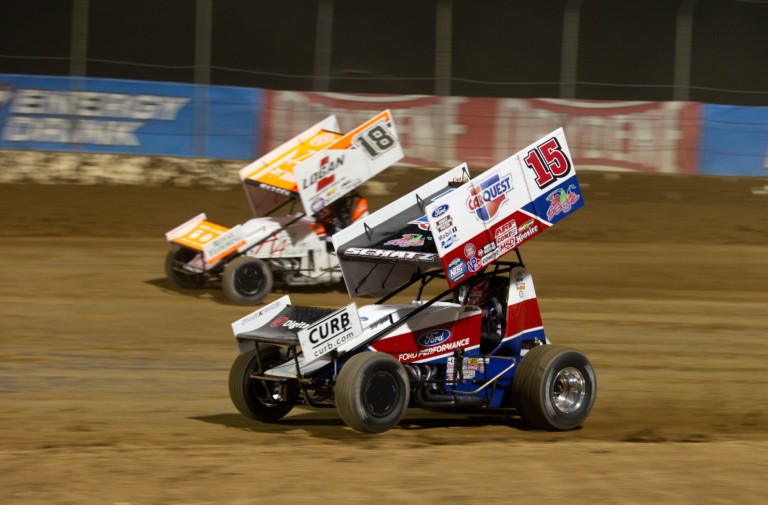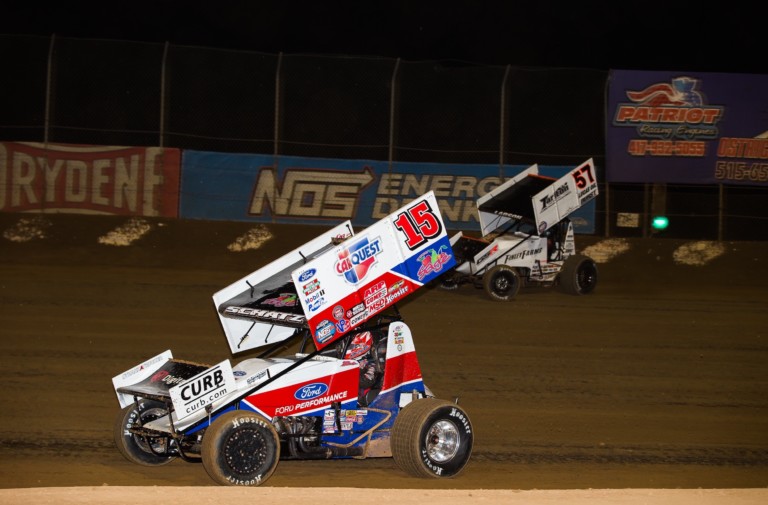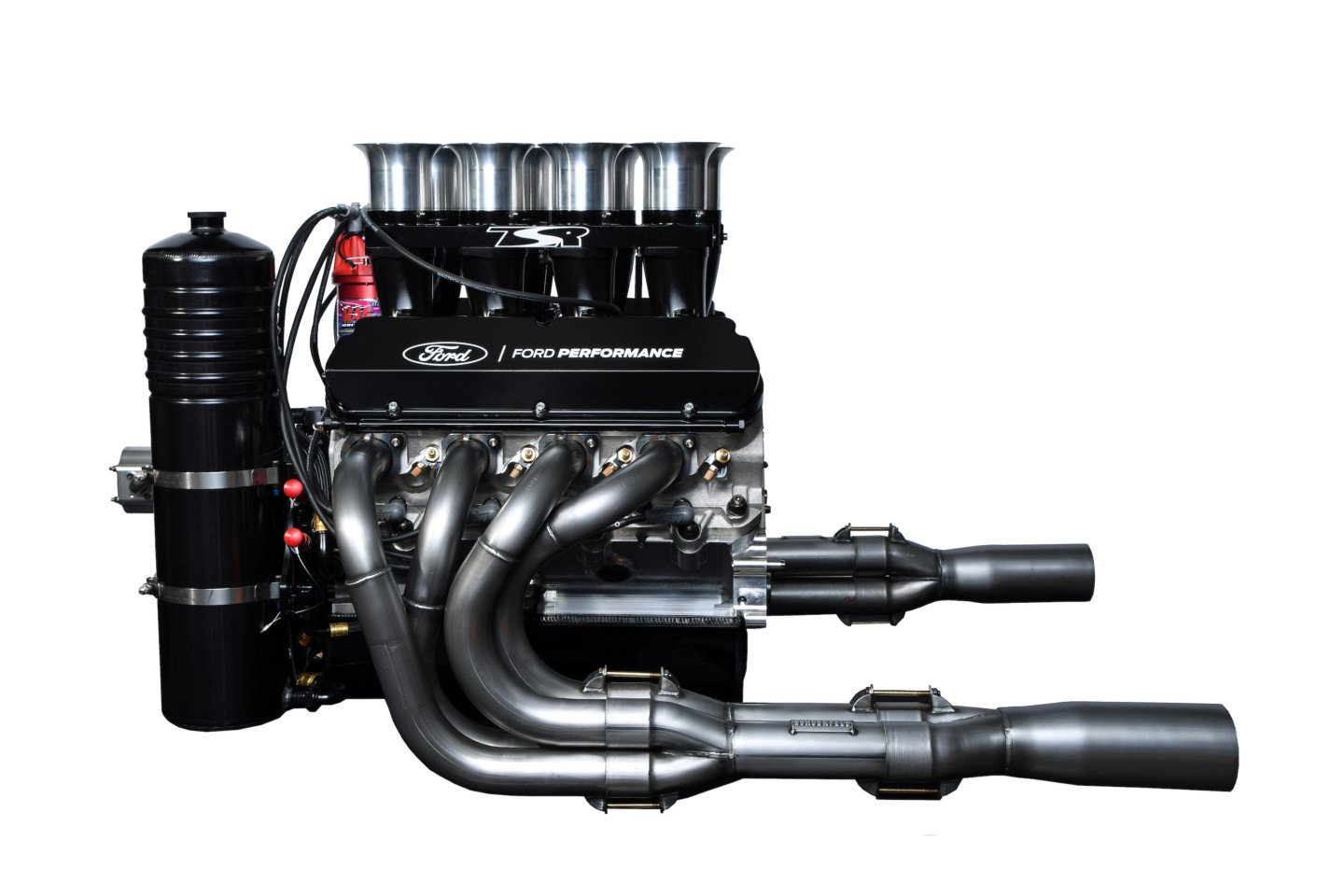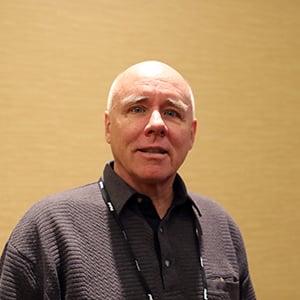Inside Ford Performance’s New Sprint Car Engine — The FPS 410
Not since 1995, when Dave Blaney drove Casey Luna’s winged sprint car to the season’s title, has a Ford engine captured the World of Outlaws (WoO) series-championship. Racing a Ron Shaver-built 410ci engine, Blaney won 12 feature races that season — third-most of any driver — and kept his car in contention for most of the other events to win the crown by 142 points. Luna’s car also won the 1989 WoO championship boasting a Blue Oval powerplant. However, it’s been a Chevy playground ever since.
That Bowtie domination will be severely challenged this year as the No. 15 Tony Stewart/Curb-Agajanian car with Danny Schatz behind the wheel is leading the Outlaws championship after the first 24 races. He has three wins, twelve top-5s, and eighteen top-10s (as of July 23, 2020).
Returning Through the Smoke
Ford Performance’s return to the Outlaws is the result of Stewart-Haas Racing moving its NASCAR efforts from Chevy to Ford in 2017. Part of the deal included helping Tony Stewart’s sprint-car program with a Ford engine that would be competitive in the Outlaw series. Tony Stewart Racing (TSR) then teamed with Andy Durham Racing Engines to work with the Ford engineers in analyzing virtual models before any new parts were cast. The code name for the engine is FPS 410, short for Ford Performance Stewart, 410 cubic-inches.
“When we announced the engine, the amount of outpouring and contact we got from people was pretty amazing,” recalls Christian Hertrich, motorsports powertrain supervisor at Ford Performance. “We’re really focusing on getting more engaged and participating in grassroots racing.” Basically, that means that the new cylinder block and cylinder head are planned for inclusion in the Ford Performance catalog.“It won’t be the exact part that Tony is running, but it’ll be close. The partnership between Ford and TSR has been fantastic,” adds Hertrich.
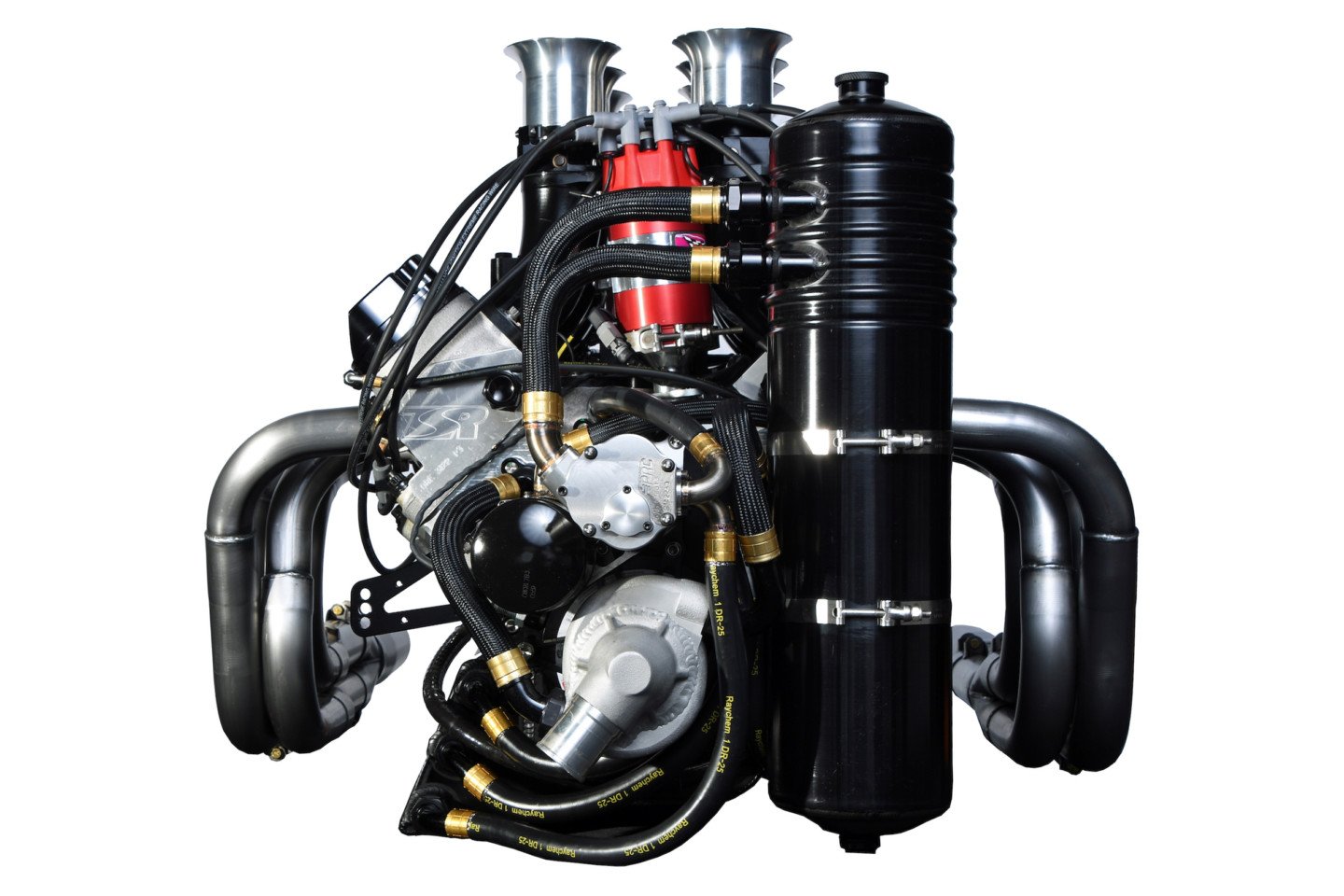
The front view shows the cam-driven oil pump and crank-driven water pump. The oil reservoir is designed to hold the minimum amount of fluid needed to help keep the overall weight down.
Development efforts started with the cylinder block. Ford had an aluminum 351 Windsor block in its performance catalog that had been used for a variety of motorsports, but the team targeted two key areas for improvement. First, increasing cylinder pressures necessitated four additional head-stud locations, totaling 14 per side and giving each cylinder a five-bolt pattern. The second goal was to reduce mass, so titanium main caps were sourced.
Ford carried over the priority-main oiling strategy and 2.750-inch main-journal diameter. The blocks are cast and “HIPped” (hot isostatic pressing) in California. When he receives the blocks, Durham performs the usual prep work, along with installing bushings for Jesel keyway lifters, installing 55mm roller cam bearings, and honing the cylinders out to a final 4.135-inch bore.
“We have to be 410-cubic-inches or smaller, so that’s the bore where we start with our 3.800-inch stroke crankshaft,” says Durham. “Some guys run more stroke and less piston.” Bryant Racing machines the billet-steel, fully counterweighted crankshaft that is installed with Daido bearings. The crank features reduced-diameter, Honda-sized 1.888-inch rod pins.
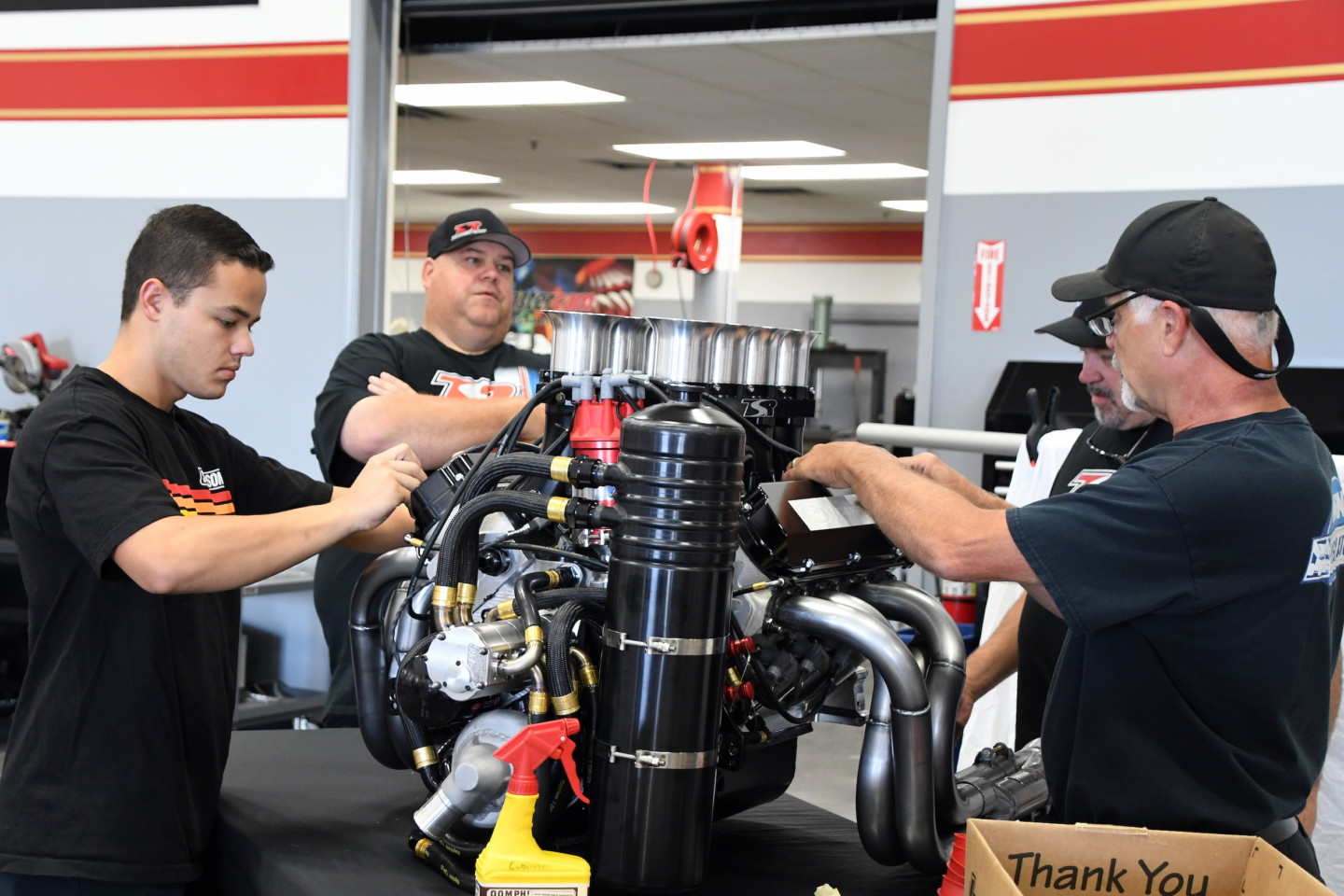
Crew members put the finishing touches on a new FPS 410 engine. Depending on race conditions, an engine may compete in upwards of 12 to 14 nights of racing before returning to the shop for teardown, inspection, and rebuild.
The crank is matched with CP-Carrillo H-beam steel connecting rods measuring 5.850-inch center-to-center. Mahle builds the aluminum pistons to TSR’s specs, including the 1mm, 1mm, 2mm Total Seal ring package that is designed to complement Durham’s unique 3-step honing strategy that doesn’t involve diamond stones.
“I don’t want to give out how we finish the cylinders, simply because a lot of guys building these engines can’t pull the vacuum with methanol. We’ve been fortunate that we’ve been able to pull vacuum,” says Durham. The pistons are secured with Trend Performance DLC-coated wrist pins and are designed to provide a 16:1 compression ratio when matched with the new cylinder heads.
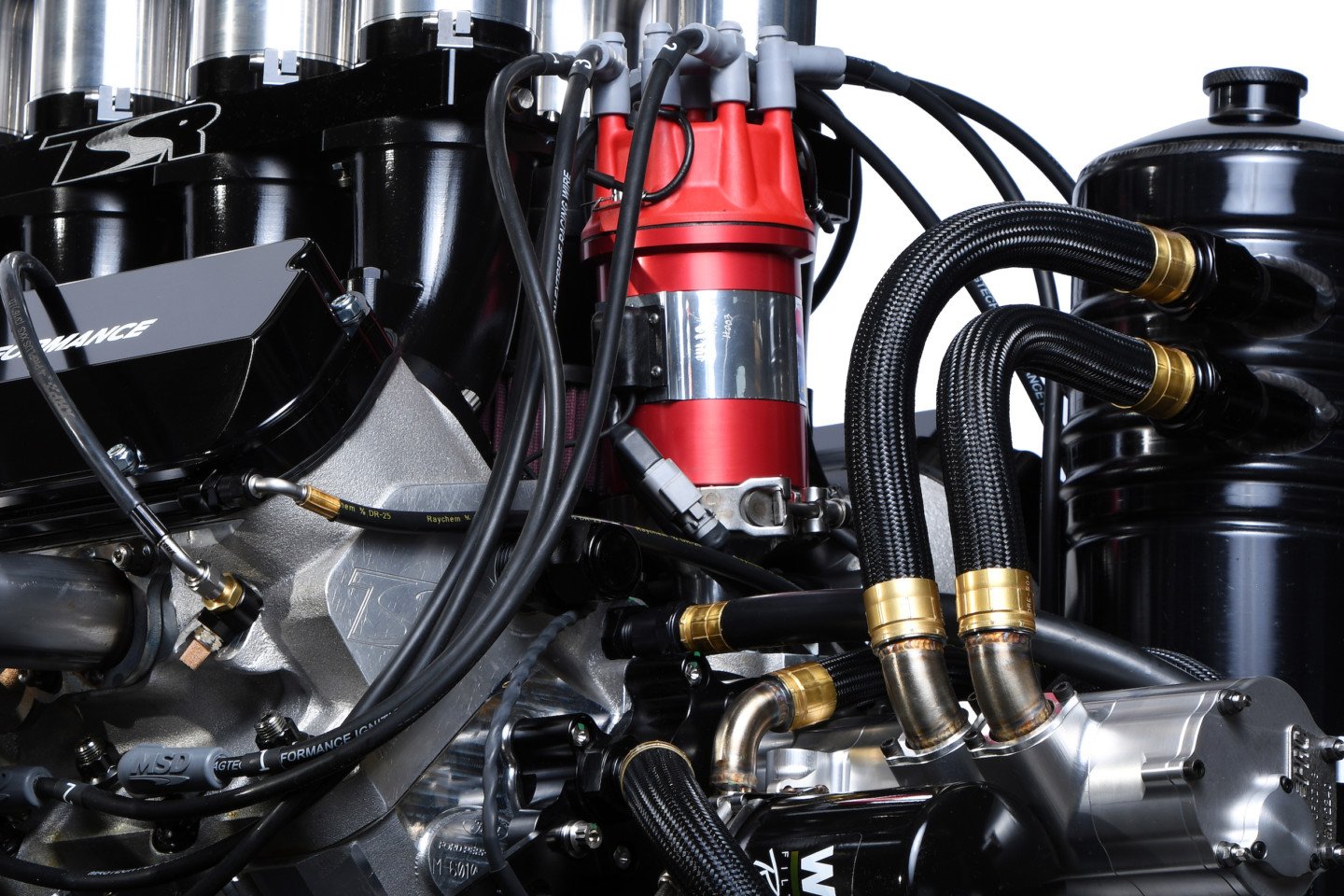
Close up of the front-mounted MSD magneto that is prepped by Magtech. Precise timing curves are ensured through a Magtech controller that relies on signals from a crank-trigger system.
“The belt is an unknown, as far as whether it will survive in that environment. Also, we’re push-starting these engines. If things get to chugging trying to start them, it really wreaks havoc on a belt.”
Roush Yates built the timing cover that mounts the 5-stage PRC oil pump in front of the camshaft. The unique cover also sports a caged bracket that allows Durham to run an ATI damper on the crankshaft, and still mount the KSE water pump so it can be driven directly off the damper. “Most guys don’t run a balancer,” notes Durham. “It’s 6 3/8-inch diameter, like we run on our Late Models. It’s to help with valvetrain stability.”
A 55mm camshaft is about the largest that could be run in the new block without threatening material around the oil galleys. The team runs roller bearings to support the tool-steel camshaft, which has a custom dual-pattern lobe design ground by Comp Cams. “It’s over .800-inch lift but the other numbers are proprietary. We run a little more on the exhaust side than we do on the intake,” says Durham. The valvetrain continues with Jesel keyway lifters and Trend .500-inch diameter, .200-inch-wall pushrods.
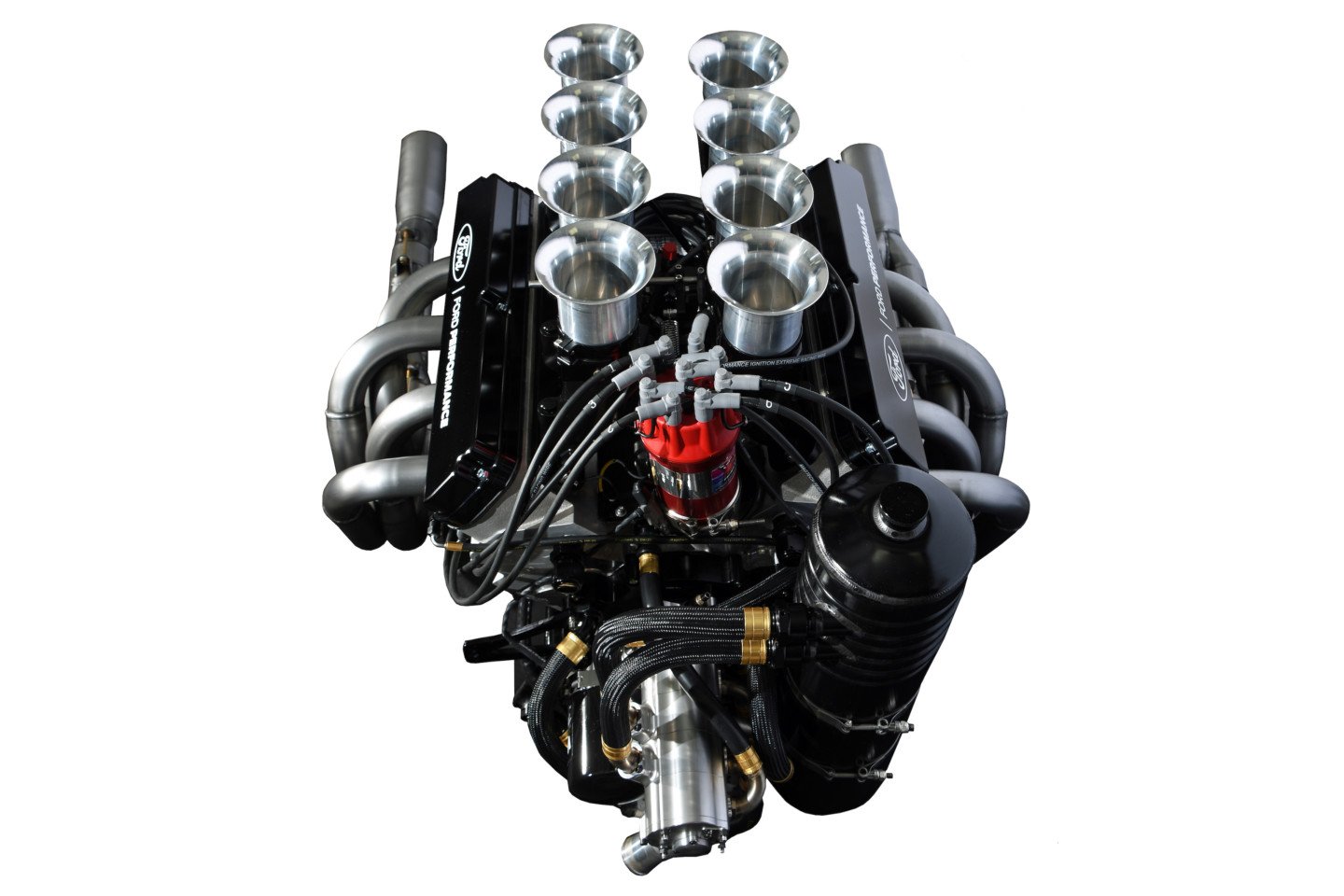
The top view shows the Engler fuel-injection setup. The manifold was custom designed to match the new cylinder head. The maximum butterfly size is 3.000-inch diameter, while TSR runs 2.900-inch throttle plates. Although rules allow 16 total injectors, TSR runs just the port-mounted injectors. The mechanical fuel pump is mounted in the rear of the engine on the bellhousing and is driven by the camshaft.
Just As Impressive Up Top
When the Casey Luna teams won those two WoO championships, engine builder Ron Shaver was able to use a Cleveland-style SC1 cylinder head. Today’s rules stipulate that the cylinder head must have an inline-valve arrangement, so twisted and canted valve locations like those on various versions of the Cleveland head could not be used in developing a new Ford head for the upgraded cylinder block.
“You can run two nozzles per cylinder — one upstream and one downstream,” notes Durham. “We basically run the ones down in the head and typically won’t run the upstream nozzles.” Ford won’t release the valve sizes, but we know a number of engine builders working with the Glidden head have installed 2.200-inch and 1.600-inch intake and exhaust valves in the past.
The heads are assembled with Xceldyne titanium dished-head valves, Xceldyne 7-degree titanium retainers, and PSI dual valve springs. Roush Yates originally supplied the shaft-mounted steel rocker arms, but the team has since switched to a proprietary Jesel steel rocker. The heads are then installed on the short block with ARP hardware on top of Cometic MLX 4-layer gaskets. Other internal studs and nuts are also from ARP, but all external fasteners are from Smith Titanium.
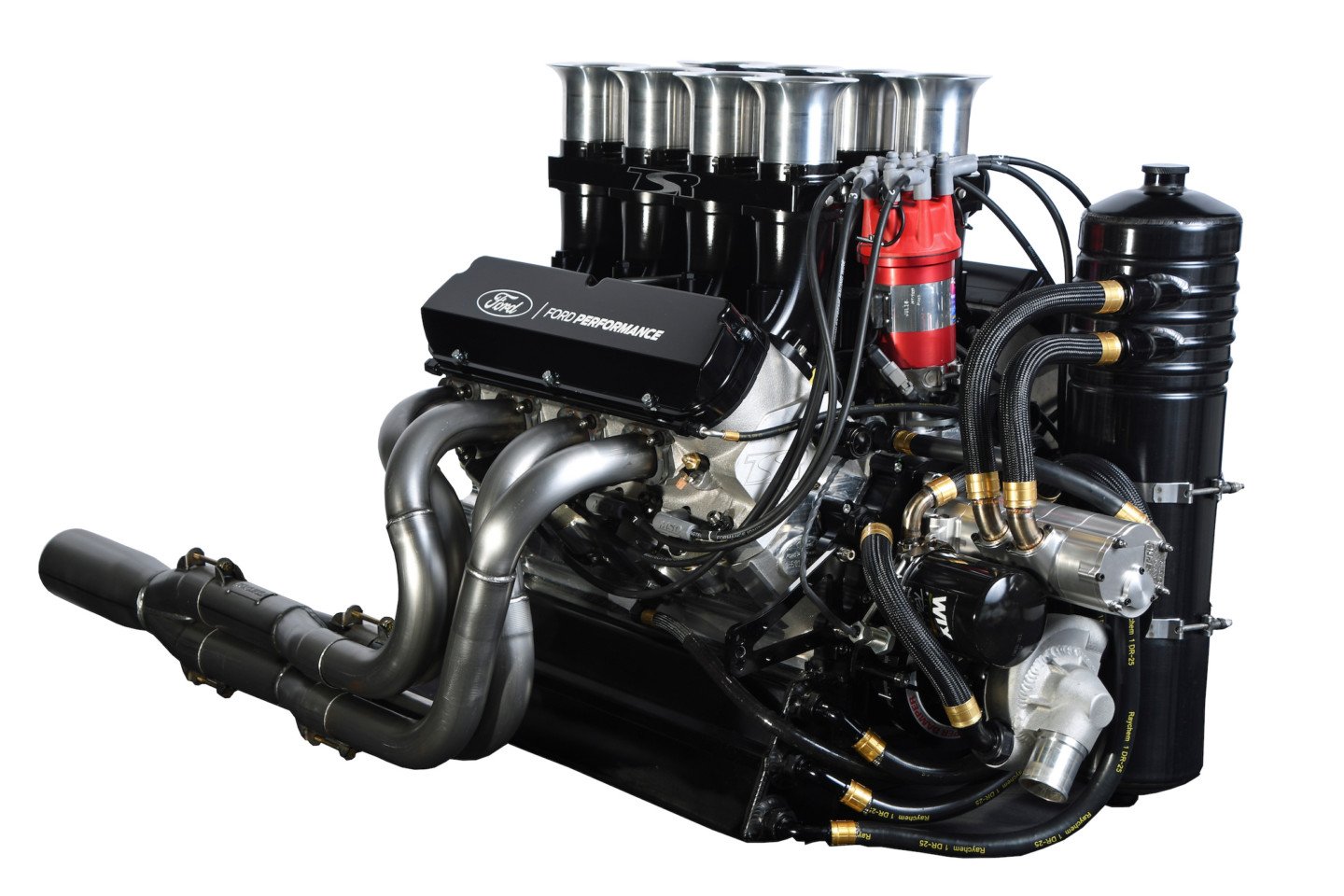
The overall view shows the stepped Tri-Y headers and Dan Olson oil pan. The valve covers are a two-piece design that allows for lash adjustment without dripping oil.
Engler designed the fuel-injection system after receiving a prototype head to use as a guide.“It was done from scratch. That way we could get the line-of-sight correct from the butterfly to the valve,” says Durham, noting that each butterfly valve is 2.900 inches in diameter. “We do change the bell stacks from track to track — and as the night goes on. With certain conditions, we’ll change the length, as well.”
The Kinsler fuel pump is cam-driven and mounted on the bellhousing. Fuel-line pressure will run up to 125 psi at wide-open-throttle. The fuel is routed through a barrel valve, and unneeded fuel is returned through a “pill” and high-speed regulator to the tank. “If we want to lean out the fuel, we put a bigger pill in the return to let more fuel back to the tank. If we want to richen it up, we put in a smaller pill so the lines to the injectors hold more fuel,” explains Durham.
Finally, the lubrication system starts with a Dan Olson pan designed to ensure proper ground clearance. Three scavenge lines lead to the oil pump, with an additional line scavenging from the lifter valley. A total of only 8.5 quarts of oil are kept in the dry-sump reservoir to help keep the overall weight down.
Danny Shatz in action with the No. 15 Stewart/Curb-Agajanian car. World of Outlaws cars are limited to 410ci engines that run on methanol. Rules stipulate a 1,400-pound minimum weight with driver.
The Proof of the Pudding is in the Pie
Initial dyno testing was conducted at Shaver Racing in Torrance, California, since they run Outlaw engines all the time and there would be a solid baseline for comparison. And the first dyno pulls were quite promising. “We were hoping it would come out as good as what they were racing with their Chevys,” remembers Durham. “When we first dynoed the engine, it was really close. So, we felt good out of the gate.”
The team made some 500 pulls before tearing down that first mule for inspection. They tightened up a couple of clearances but made no major design or tuning changes. The engine was reassembled and put into a car for track testing. “Everything was pretty much the way it is today, just like we built the first one,” praises Durham. “Other than some tweaks here and there with the cam and a couple of other things we’re playing with.”
The future for the new block-and-head combo is likely to expand beyond the sprint-car venues, including drag racing and off-road, once the parts are listed in the Ford Performance catalog. The new Ford will also have additional competition in the near future. Toyota announced last year that TRD is working on a 410 sprint-car engine. Once it’s designed and tested, components will be available for purchase by engine builders.
Meanwhile, Durham continues to monitor the Ford engine’s progress this year with a goal of improving performance on the shorter tracks of the Outlaws schedule. “So, far it’s been really good. We’ve been working on the short track program—the more stop-and-go type tracks,” sums up Durham. “We’re doing as much testing as we can right now to learn what the engine wants for that type of track and how we can help suit Danny and his driving style.”
AUGUST 04, 2020
Engine Labs

